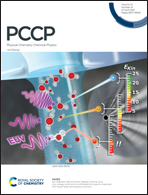Boosting the photocatalytic hydrogen evolution performance of monolayer C2N coupled with MoSi2N4: density-functional theory calculations†
Abstract
Very recently, an important two-dimensional material, MoSi2N4, was successfully synthesized. However, pure MoSi2N4 has some inherent shortcomings when used in photocatalytic water splitting to produce hydrogen, especially a low separation rate of photogenerated electron–hole pairs and a poor visible light response. Interestingly, we find that the MoSi2N4 can be used as a good modification material, and it can be coupled with C2N to form an efficient heterojunction photocatalyst. Here, using density functional theory, a type-II heterojunction, C2N/MoSi2N4, is designed and systematically studied. Based on AIMD simulations and phonon dispersion verification, C2N/MoSi2N4 shows sufficient thermodynamic stability. As well as its perfect interface electronic properties, its large interlayer charge transfer and good visible light response lay the foundation for its excellent photocatalytic performance. In addition, the oxidation and reduction potentials of the C2N/MoSi2N4 heterojunction not only can meet the requirements of water splitting well but can also maintain a delicate balance between oxidation and reduction reactions. More importantly, the |ΔGH*| value of the C2N/MoSi2N4 heterojunction is very close to zero, indicating great application potential in the field of photocatalytic water splitting. In brief, our research paves the way for the design of future MoSi2N4-based efficient heterojunction photocatalysts.



 Please wait while we load your content...
Please wait while we load your content...